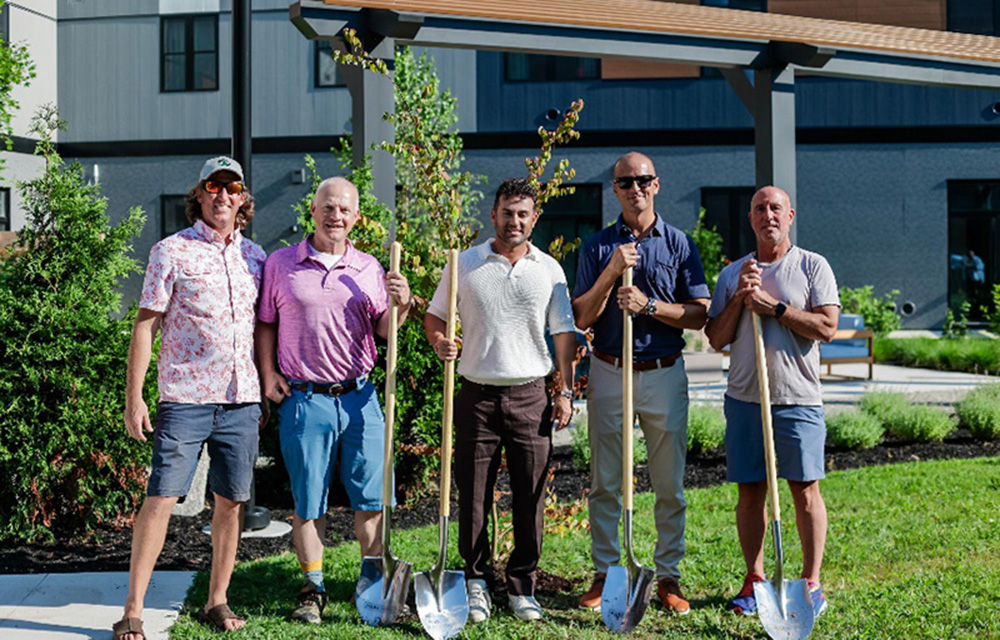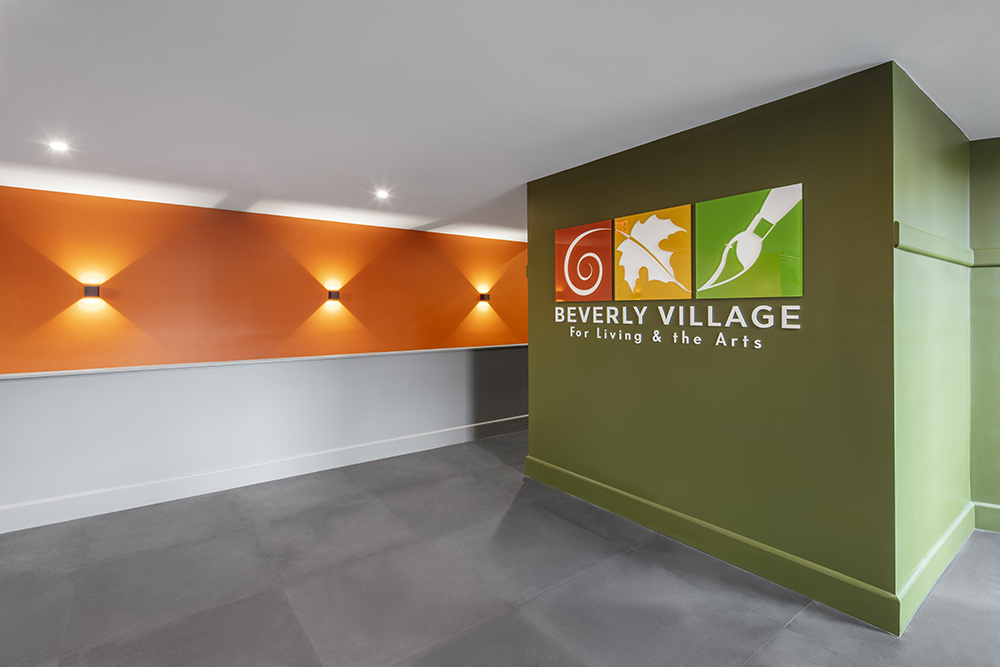News: Construction Design & Engineering
Posted: January 2, 2008
Columbia Construction participates in ceremony awarding Cell Signaling Technology a LEED certificate
Columbia Construction participated in the long-awaited ceremony on November 16th awarding Cell Signaling Technology's (CST) president, Michael Comb, PhD., their LEED certificate. The celebration included approximately one hundred participants, including CST staff; Columbia Construction; the architect, D. F. Trees Associates; as well as engineers from RDK Engineers and D & L Engineering. Columbia served as construction manager and the LEED project administrator for the 105,000 s/f renovation/addition project for CST, formerly the King's Grant Inn.
"It was a privilege working with Cell Signaling Technology", said Neil Lemieux, Columbia's director of pre-construction. "They took the initiative before the plans and specifications for the project were even created. Their passion for the environment created the synergy and enthusiasm that guided the team throughout the project. As a contractor, LEED enables us to have an integral role in the process and to have a positive impact on our environment, one building at a time".
Peter Gorer, of the USGBC, kicked off the event by providing a snapshot of the various sustainable elements of CST's facility, and how the team accomplished such an impressive goal. "What is truly amazing is this team was able to convert a motel into a state-of-the-art lab facility! Surely, that must be a first!", said Peter Gorer.
Following is an outline of these accomplishments:
* Spearheaded and managed by Columbia, the team carried out an indoor air quality management plan, both during construction, and again before occupancy to ensure that the volatile organic compounds and other contaminants affecting indoor health had been removed before anyone moved in.
* Through recycling and salvaging efforts, Columbia managed to stop over 75% of the construction waste from being disposed of as landfill.
* CST chose a site that had already been developed, and thus did not diminish the extent of land available for agriculture or natural vegetation. The fact that over 75% of the existing building shell was able to be preserved for reuse reduced a huge amount of the carbon emissions associated with transporting building materials, and also protected our overall stock of raw materials for future generations.
* The team achieved benchmarks in terms of transportation, by recognizing the value of alternative fuel vehicles, capping parking capacity and promoting carpooling, and by making bicycle-friendly provisions.
* Managed storm water run-off so that it does not overburden drainage systems.
* Reduced night light pollution, which plays a surprisingly important part in preserving habitat.
* Avoided using valuable drinking water for landscape irrigation, an important consideration since the North Shore does experience seasonal water shortages.
* Supported local industry, by using materials manufactured locally
* Earned the most LEED credits within the Indoor Environmental Quality category. Most Americans spend 85% of their time indoors. Our homes and the places we go to work, shop and play are our habitat. In designing this building, the project team did everything they could to achieve excellence in air change effectiveness and thermal comfort.
* The architect, Doug Trees, took care in selecting adhesives, sealants, paints and carpet materials to ensure that only those that are the least odorous or potentially irritating were specified for the building.
* Designed the space so almost everyone has access to natural daylight and views.
Columbia's project management team included Jim Marsh, vice president/COO; Fred Scribner, principal-in-charge; Neil Lemieux, LEED AP, director of pre-construction and LEED project administrator; Shaun Lover, project manager; Judy Delorey, project assistant; and superintendents Greg Keller and Tom Willwerth.
MORE FROM Construction Design & Engineering
Reveler Development plants a tree for grand opening of The Eddy
Biddeford, ME According to Reveler Development, The Eddy, a new multi-family community located at 8 Eddy Ave., celebrated its grand opening, following the final phase of

Quick Hits
Columns and Thought Leadership

The rise of incubators and co-working spaces: The latest in life sciences - by Matt Combs
In recent years, the life science industry has witnessed a shift in how companies operate and innovate. One of the key driving forces behind this transformation is the emergence of incubators and co-working spaces specifically tailored to meet the unique budget and schedule needs of startups.

Careers in Construction Month focus on training and safety - by Joe Camilo
October is Careers in Construction Month, and rarely has it been more consequential. According to our chapter’s national parent organization, the construction industry needs to attract half-a-million new workers in the coming year to meet demand. Addressing that need is a huge job, but we at ABC MA are trying to do our part.

The design-build advantage: Integrated interior design solutions - by Parker Snyder
When it comes to corporate interior spaces for both commercial and industrial projects, partnering with a design-build firm with in-house interior design services can offer clients many benefits. Unlike traditional delivery methods where interior designers operate independently from the design and construction teams, often creating a longer project timeline as cost negotiations and revisions ensue

Ask the Electrician: Is summer a prime time for commercial electrical maintenance?
The answer is “Yes!” While January marks the official new year, many businesses view September as a fresh start. This makes summer an ideal time for commercial property owners to schedule long-term electrical maintenance projects.







.png)